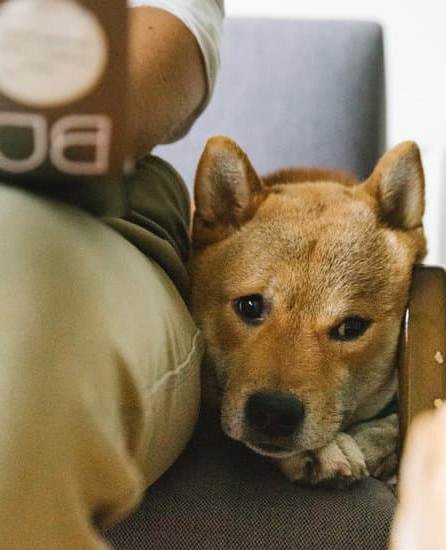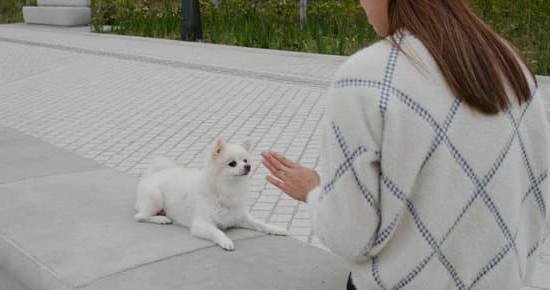Does a muzzle help train a dog? Dog trainers and pet owners alike have debated the effectiveness of using muzzles in training. In this article, we will delve into the purpose of a dog muzzle in training and its potential benefits. Understanding the role of muzzles in training requires a closer look at dog behavior and effective training methods, as well as debunking common myths associated with muzzles.
A dog muzzle is a device that fits over a dog’s snout to prevent biting, barking, or other unwanted behaviors. While often associated with aggressive or reactive dogs, muzzles can also be used as a tool for positive reinforcement training and behavioral modification. It is important to understand the purpose of a muzzle in training and how it can aid in creating a safe and controlled environment for both the dog and those around them.
In this article, we will explore the benefits of using a muzzle in dog training, including its role in safety, prevention of unwanted behaviors, and aiding in socialization. We will also discuss how to properly introduce and acclimate a dog to wearing a muzzle, as well as alternative training methods for addressing behavioral issues without relying on the use of a muzzle as a long-term solution.
Understanding Dog Behavior and Training Methods
When it comes to training a dog, understanding their behavior and choosing the right methods is crucial for success. Positive reinforcement is one of the most effective and humane ways to train a dog and foster good behavior. It involves rewarding your dog for positive actions or behaviors, which encourages them to repeat those actions in the future.
Here are some important points to consider when using positive reinforcement in dog training:
- Consistency: Consistently rewarding your dog for desired behaviors is key to helping them understand what you expect from them.
- Timing: Timing is everything when it comes to positive reinforcement. The reward should be given immediately after the desired behavior occurs, so that your dog can make the connection between their action and the reward.
- Patience: Training a dog takes time, patience, and dedication. It’s important to remain patient and consistent throughout the training process.
Positive reinforcement not only helps with basic obedience training, but also plays a significant role in addressing behavioral issues such as aggression, fear, and anxiety. By using rewards such as treats, praise, or toys, you can effectively guide your dog towards appropriate behavior without the need for punitive measures.
It’s important to note that positive reinforcement can be used in conjunction with other training tools such as a muzzle. When used correctly and in combination with positive reinforcement techniques, a muzzle can help keep both your dog and others safe while allowing for effective training.
Debunking Myths About Muzzles
Dog muzzles have been surrounded by misconceptions and stereotypes, often leading to misunderstanding about their purpose in training. It is important to debunk these myths and address these misconceptions to provide a clearer understanding of how muzzles can be beneficial in training a dog.
Myth: Muzzles Are Cruel and Inhumane
One common misconception about muzzles is that they are cruel and inhumane, causing distress or discomfort to the dog. However, when used properly, muzzles can actually promote safety for both the dog and the people around them. It is important to understand that a muzzle should only be used as a temporary aid in specific situations where it is necessary for the dog’s well-being and the safety of others.
Myth: Muzzles Are Only for Aggressive Dogs
Another stereotype surrounding muzzles is that they are only meant for aggressive or dangerous dogs. In reality, muzzles can be used for various reasons such as preventing scavenging, barking, or chewing. Additionally, they can also help with socialization and behavior modification by providing a sense of security for the dog which can ultimately aid in training.
Myth: Muzzles Will Make a Dog More Aggressive
Some people believe that using a muzzle on a dog may provoke aggression or cause the dog to become more dangerous. However, when introduced correctly and paired with positive reinforcement techniques, muzzles can actually help alleviate anxiety and fear-based behaviors without increasing aggression. This makes them an effective tool for addressing certain behavioral issues during training.
By addressing these myths and stereotypes about muzzles, it becomes clear that when used responsibly and under proper guidance, muzzles can indeed play a valuable role in training a dog effectively.
The Benefits of Using a Muzzle in Dog Training
A dog muzzle is a tool commonly used in dog training to prevent biting, chewing, and other unwanted behaviors. Contrary to popular belief, muzzles can actually be beneficial in the training process when used properly. Muzzles are not meant to harm or punish the dog, but rather to keep them and others safe during training sessions.
One of the main benefits of using a muzzle in dog training is safety. This safety extends to both the dog and those around them. By preventing biting and chewing, muzzles reduce the risk of injury during training sessions, especially when working on behavior modification with an aggressive or reactive dog. Muzzles give trainers peace of mind knowing that they can focus on the training without worrying about potential aggression from their canine companion.
In addition to safety, muzzles also aid in the prevention of unwanted behaviors. When used in conjunction with positive reinforcement training methods, muzzles can help dogs learn to modify their behavior by preventing them from practicing undesirable habits. For example, a muzzle may be used to discourage excessive barking or nipping, allowing the trainer to redirect the dog’s focus towards more positive behaviors.
Lastly, using a muzzle as part of a comprehensive training plan can also facilitate socialization for dogs that may otherwise struggle with interactions with other animals or people. In some cases, anxious or aggressive dogs may benefit from wearing a muzzle during controlled socialization exercises, providing a sense of security while interacting with new environments and individuals.
| Benefits | Description |
|---|---|
| Safety | Muzzles prevent biting and chewing, reducing the risk of injury during training sessions |
| Prevention of Unwanted Behaviors | Muzzles can aid in discouraging undesirable habits through positive reinforcement methods |
| Socialization | Muzzles provide security for anxious or aggressive dogs during controlled socialization exercises |
How to Properly Introduce and Acclimate a Dog to Wearing a Muzzle
Introducing a muzzle to your dog can be a useful tool in training, but it is essential to introduce and acclimate them properly. Muzzles can help prevent unwanted behaviors and ensure the safety of your dog and others around them. Here are some steps to properly introduce and acclimate your dog to wearing a muzzle:
- Choose the right muzzle: There are various types of muzzles available, including basket muzzles, soft muzzles, and grooming muzzles. It’s important to choose one that fits your dog comfortably and allows them to pant and drink water.
- Desensitization: Start by getting your dog used to the muzzle gradually. Show them the muzzle and offer treats or rewards when they show interest in it. Gradually progress to touching their snout with the muzzle and then fastening it for short periods.
- Positive association: Associate the muzzle with positive experiences by offering treats, praise, or playtime while they are wearing it. This will help them view the muzzle in a positive light.
It’s important to take things slow and be patient during this process. Rushing through it can cause stress or anxiety for your dog, which may result in negative associations with the muzzle. Always observe your dog’s body language and reactions during the acclimation process.
Using a muzzle should not replace other training methods, such as positive reinforcement techniques. The goal is to use the muzzle as a temporary aid while working on long-term behavior modification. Professional trainers or behaviorists can provide guidance on incorporating the use of a muzzle into a comprehensive training plan tailored to your dog’s specific needs.
Ultimately, proper introduction and acclimation does a great deal in helping train a dog ensures that wearing a muzzle becomes a positive experience for your furry friend rather than something they dread.
Using a Muzzle as a Temporary Training Aid vs a Long-Term Solution
When it comes to training a dog, the use of a muzzle can be a helpful tool in certain situations. However, it is important to understand the difference between using a muzzle as a temporary training aid versus relying on it as a long-term solution. A muzzle can be used temporarily to address specific behavioral issues or safety concerns, but it should not be seen as a substitute for proper training and behavior modification.
In some cases, such as when working with a reactive or aggressive dog, using a muzzle during training sessions can provide an added layer of safety for both the dog and the trainer. It can allow the trainer to work on behavior modification without the risk of potential harm. Additionally, when introducing a dog to new environments or social situations, a muzzle can help prevent any unwanted behaviors while the dog learns appropriate socialization skills.
However, it is important to recognize that using a muzzle as a long-term solution does not address the underlying cause of the behavioral issue. It should not be seen as a permanent fix for aggression, fear, or anxiety. Instead, it is essential to work with professional trainers and behaviorists to develop an effective training plan that focuses on positive reinforcement and addressing the root of the problem.
Ultimately, while muzzles can have their place in certain training scenarios, they should not be relied upon as the sole method for addressing behavioral issues in dogs. It is crucial to seek out professional guidance and explore alternative training methods that focus on promoting positive behaviors and creating a trusting bond between the dog and their owner.
The Role of Professional Trainers and Behaviorists in Using Muzzles for Training
When it comes to using muzzles in dog training, professional trainers and behaviorists play a crucial role in ensuring the safety and effectiveness of this tool. While some may view muzzles as a last resort or a sign of aggression in a dog, it’s important to understand that they can actually be used in a positive and proactive manner to address behavioral issues.
Understanding the Purpose of Muzzles
Professional trainers and behaviorists have the knowledge and expertise to properly assess whether a muzzle is necessary for a dog’s training program. They understand that muzzles serve multiple purposes, including preventing biting or nipping behavior during training sessions, providing safety in situations where a dog may feel anxious or stressed, and managing interactions with other dogs or people during socialization exercises.
Guiding Proper Introduction and Acclimation
Trainers and behaviorists are also instrumental in guiding dog owners on how to introduce and acclimate their dogs to wearing a muzzle. This process requires patience, gradual desensitization, and positive reinforcement techniques to help the dog associate the muzzle with positive experiences. Professional guidance ensures that the introduction of the muzzle does not cause additional stress or anxiety for the dog.
Implementing Alternative Training Methods
In addition to using muzzles as a training aid, professional trainers and behaviorists can also offer alternative methods for addressing behavioral issues without relying solely on muzzles. These may include implementing positive reinforcement techniques, desensitization exercises, behavior modification strategies, and personalized training plans tailored to the specific needs of the dog.
Overall, professional trainers and behaviorists play an essential role in utilizing muzzles effectively as part of comprehensive training programs for dogs. Their expertise ensures that muzzles are introduced thoughtfully and responsibly, with an emphasis on positive reinforcement and long-term behavioral success without the need for prolonged reliance on this tool.
Alternative Training Methods for Addressing Behavioral Issues Without the Use of a Muzzle
In conclusion, while a muzzle can be a useful tool in certain dog training scenarios, it is not the only solution for addressing behavioral issues. Alternative training methods can be just as effective in helping dogs learn appropriate behaviors and socialization skills. When it comes to training a dog, positive reinforcement and patience are key elements that should never be overlooked.
Using treats, toys, and verbal praise to reward good behavior is an essential part of positive reinforcement training. This method focuses on encouraging desired behaviors rather than punishing unwanted ones, creating a more enjoyable and effective learning experience for the dog. Additionally, seeking the assistance of professional trainers and behaviorists can provide valuable insights into understanding a dog’s behavior and implementing the most suitable training techniques.
While muzzles can serve a specific purpose in certain situations, it is important to explore all available options before resorting to their use. By incorporating positive reinforcement techniques and seeking professional guidance, pet owners can address their dog’s behavioral issues without solely relying on muzzles. Ultimately, understanding the needs of your dog and using various training methods tailored to their individual personality is crucial in fostering a healthy and well-behaved companion.
Frequently Asked Questions
How Long Should It Take to Muzzle Train Your Dog?
The time it takes to muzzle train a dog can vary depending on the dog’s temperament and previous experiences with muzzles. It’s important to go at the dog’s pace and not rush the process.
Can You Use a Muzzle to Train a Dog to Stop Biting?
Muzzles can be used as a tool to train a dog to stop biting, but they should not be the sole method of addressing the behavior. Proper training, socialization, and understanding the underlying reasons for biting are essential.
Do Muzzles Make Dogs Less Aggressive?
Muzzles themselves do not make dogs less aggressive. They simply prevent a dog from being able to bite while wearing them. Addressing aggression in dogs requires a comprehensive approach that may include training, behavior modification, and sometimes professional help from a veterinarian or animal behaviorist.

Welcome to the blog! I am a professional dog trainer and have been working with dogs for many years. In this blog, I will be discussing various topics related to dog training, including tips, tricks, and advice. I hope you find this information helpful and informative. Thanks for reading!





